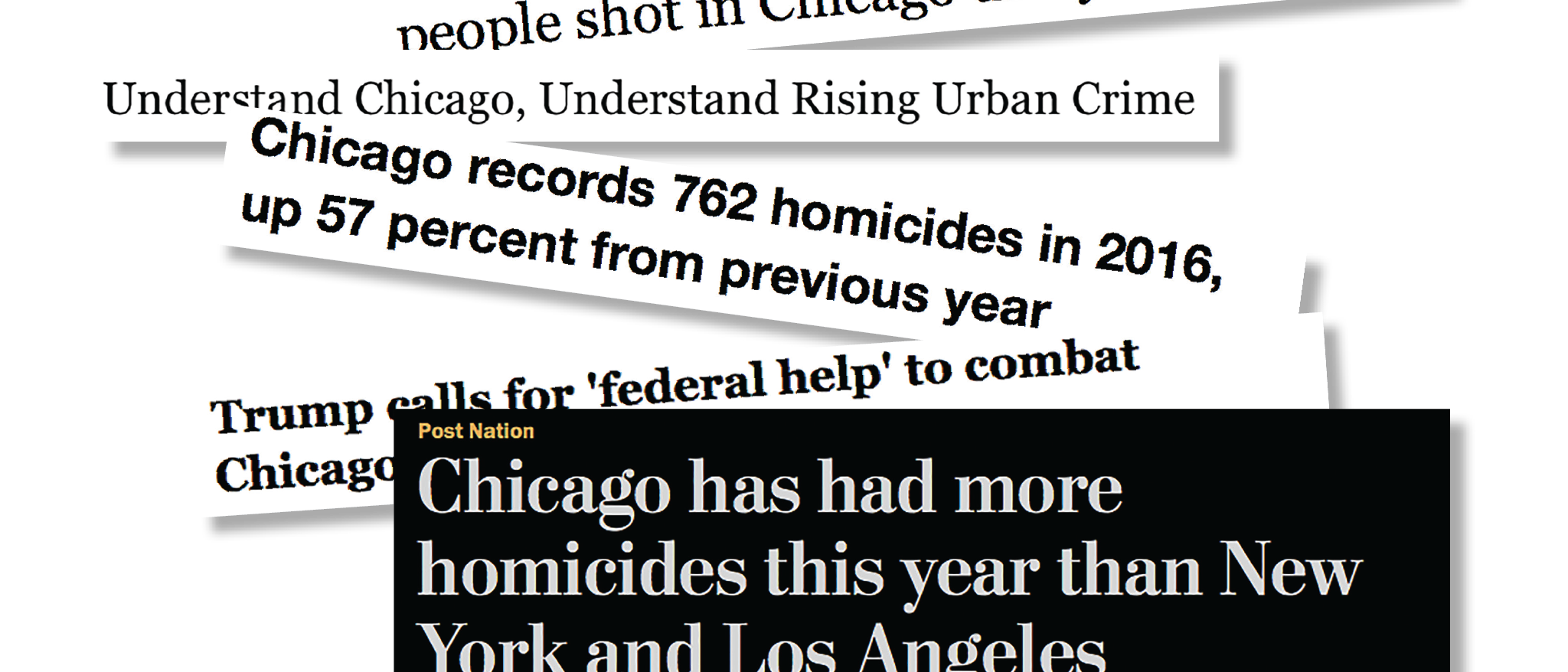David Olson sees it splashed across the front pages every week: 2016 has been Chicago’s most violent year in two decades.
But unbeknownst to many Americans, Olson explains that those headlines don’t always provide the full picture.
“Numbers of murders are about half of what they used to be, and violence in general is about half of what it used to be,” Olson, 50, a criminal justice and criminology professor at Loyola University Chicago, said.
In the wake of a wild election season, 2016 crime rates are under a microscope in order to evaluate the success of America’s criminal justice system. Although multiple U.S. cities experienced an increase in gun violence this year, Chicago seemingly earned national attention due to the 27 percent increase in murders from 2015.
But criminologists like Olson look at the bigger picture when studying violent trends. Before coming to Loyola, Olson spent much of his career working with the Illinois Criminal Justice Information Authority, an organization tasked with evaluating the Illinois criminal justice system and developing programs and policies to ensure the system operates efficiently.
“When I started my work there in the late ‘80s, it was really at the height of violence in Chicago and nationally,” Olson said.
The numbers don’t lie. According to data from the Chicago Police Department, 1989-1997 saw Chicago’s highest murder totals in the last three decades, peaking in 1992 with 943 total homicides. Chicago tallied 746 homicides in 2016, a 21 percent decrease from the 1992 count.
So why is the public under the impression that Chicago’s violent crime is so much worse in 2016?
“Ask a journalist,” Olson remarks.
“When you ask people, ‘Is violence getting worse?’ the answer is almost always ‘yes’ regardless of what reality is,” Olson said. “We as criminologists say, ‘Boy, where were you 30 years ago?”
However, both murders and shootings are up from 2015. Last year, Chicago saw 494 total homicides and 2996 individuals shot, which Olson says may be creating some of the buzz. Still, it’s difficult to ignore the role of the media as reporting tactics continue to rapidly modernize.
“In the late ‘80s and early ‘90s, you only knew about violence because of what you read in the newspaper or saw on the 6 o’clock news. Those were the only two outlets you had for news,” Olson said. “Today, as a media outlet, you could run a story on every single homicide that occurred in Chicago.”
And many media outlets do. The Chicago Tribune, DNA Info, the Red Eye, and the Chicago Sun-Times, just to name a few, all possess comprehensive homicide counts that are updated online as fast as the data rolls in.
In addition to the amount of news being published, questions of accuracy and bias surrounding crime reporting are scrutinized by criminologists when evaluating the public perception of violence. Loyola University Chicago associate professor of criminology and former Chicago police officer Robert Lombardo feels that multiple news outlets aren’t getting the story straight.
“I think allegations of racial profiling are way overdone,” Lombardo said.
Throughout his 28 years with the Chicago Police Department, Lombardo, 68, has witnessed firsthand the many factors that contribute to Chicago’s high annual crime rate. In recent years, Lombardo believes media portrayal of police officers should be added to that list.
“I think the recent upsurge in violence this last year is a direct result of what we call ‘de-policing’ or the Ferguson effect,” Lombardo said.
The Chicago Tribune defines the Ferguson effect as police withdrawal and hesitation in the line of duty for fear of increased media scrutiny. In one such incident, a veteran Chicago police officer did not draw her weapon in a physical confrontation in order to avoid appearing on national news for police brutality.
Instead, she appeared on the news for entering the hospital in serious condition after receiving a brutal beating from her attacker.
“It’s had a chilling effect on police practices,” Lombardo said. “But I guess it’s far easier (for the media) to listen to those who raise their voices like Black Lives Matter.”
No matter which way you look at it, media holds a unique power to mold the public view of any major issue. With that power, the media shoulders the responsibility to not only inform the public with key happenings in the community, but to prevent inaccurate narratives from circulating.
“The homicide rate in Chicago has always been relatively high compared with other cities,” Olson said. “Why is it that now we’re concerned?”
Olson doesn’t have an exact answer to that question, but he can think of one viable response:
“Because that’s a good story.”



